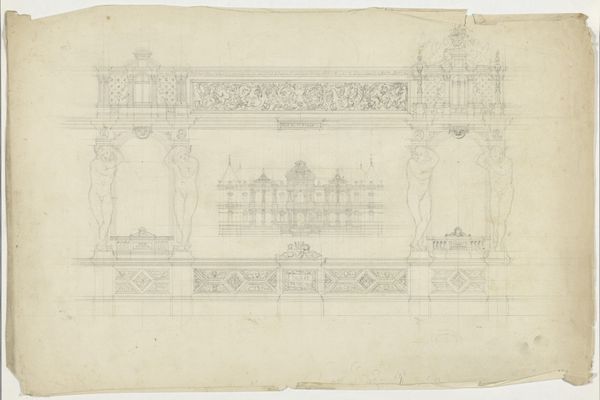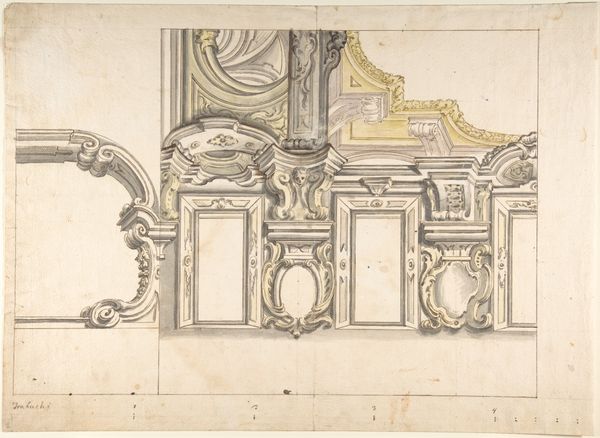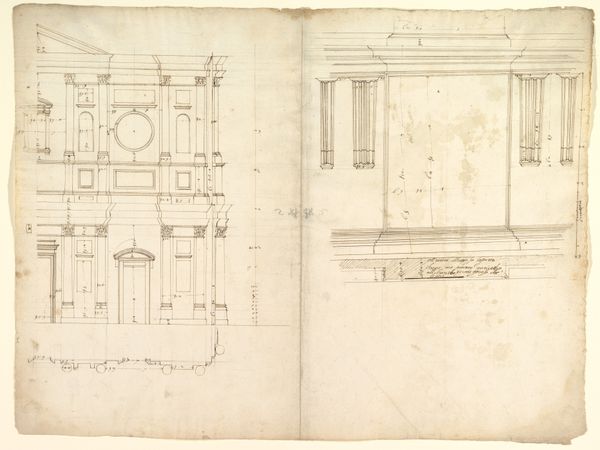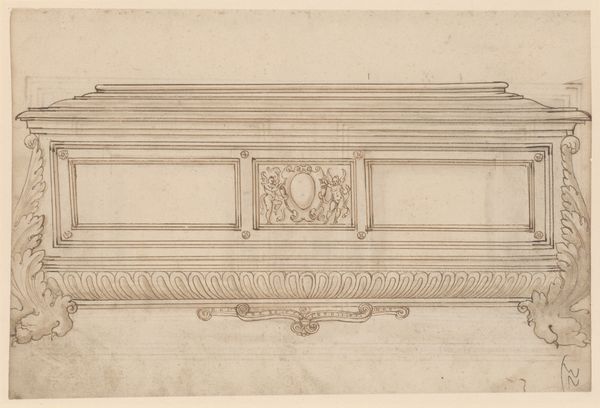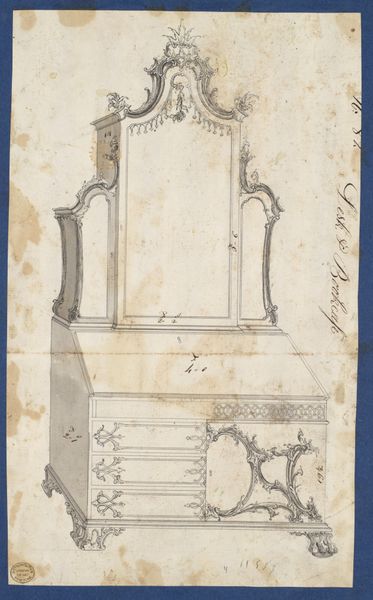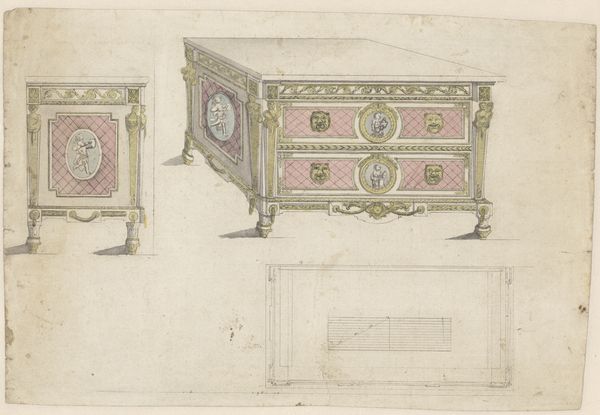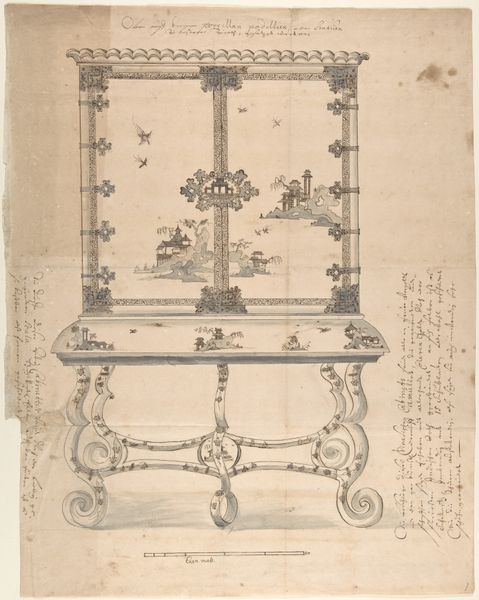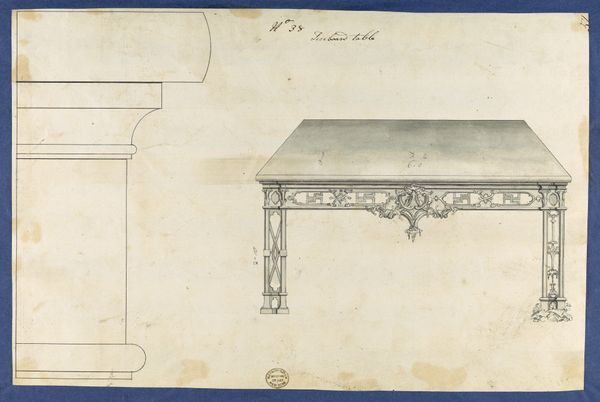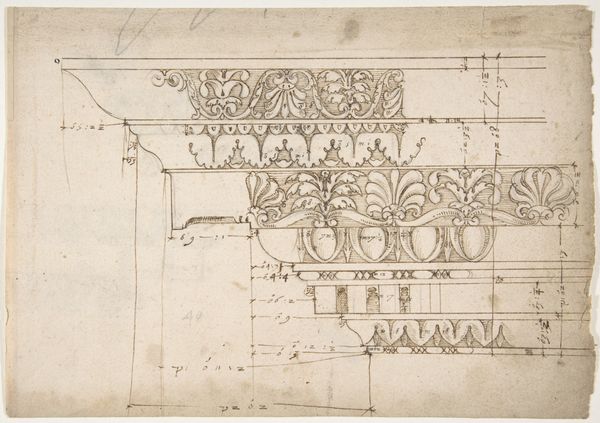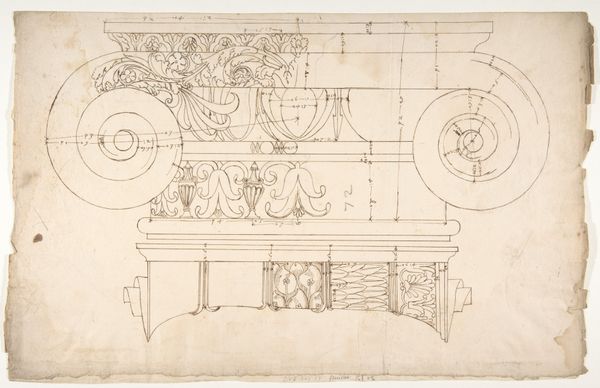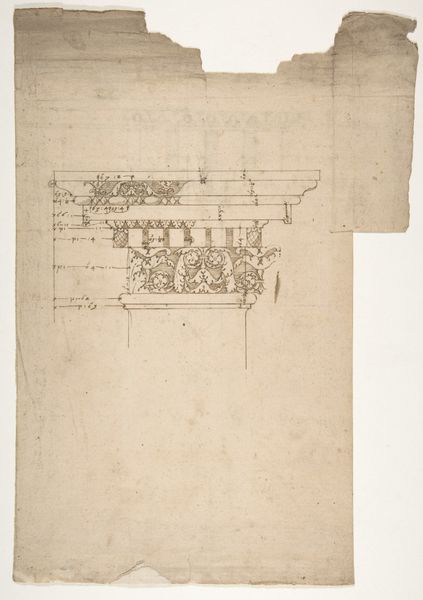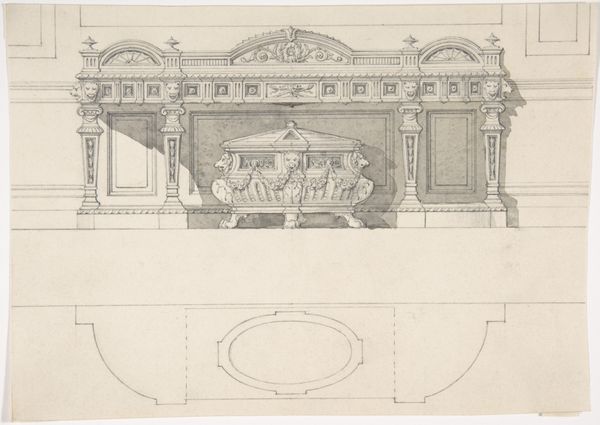
drawing, print, paper, pencil, architecture
#
drawing
#
baroque
# print
#
landscape
#
etching
#
perspective
#
paper
#
form
#
pencil
#
line
#
architecture
Dimensions: 6 1/8 x 13 5/8 in. (15.6 x 34.6 cm)
Copyright: Public Domain
Curator: This sketch really sings. The architectural forms dance on the page despite being static objects. The contrast in textures is really noticeable from a distance, I’m drawn to the interplay of shadow and light implied in the pencil and ink work. Editor: Before us we have “Ornamental Design for a Loggia or Frieze (?)”, thought to originate sometime between 1700 and 1780. This drawing, now housed at the Metropolitan Museum of Art, comes from an anonymous hand, and uses pencil, pen, and brown ink on paper. Its purpose may have been as a design for architectural decoration. Curator: An architectural proposition. It seems concerned with creating an illusionistic space. Observe how the columns create framing devices, acting as portals for an implied landscape, hinting toward atmospheric perspective beyond. What do you make of the implied social functions of such spaces? Editor: Given the prominence of loggias and friezes during this period, it seems designed to convey a sense of grandeur and refined taste, a stage for aristocratic display. The baroque style suggests the importance of visual drama in conveying status. Curator: Precisely. And what a stage! Note the visual balance. It guides our eye laterally. Despite the intricacy of the detailing around the columns, it resolves in a coherent unified whole. Editor: It's fascinating to think about where this design might have been implemented—which stately home or public building would bear its mark. These sketches also give a rare insight into the creative processes of artisans during the period, particularly how aesthetics were formulated through line and spatial organization. Curator: Looking at how this period of architectural design informed future trends can give great understanding on how spaces should relate to a specific aesthetic feeling. We’re clearly just touching the surface today. Editor: Indeed. Hopefully our listeners are left with renewed curiosity about architectural design, particularly as it reflects cultural aspirations from a past time.
Comments
No comments
Be the first to comment and join the conversation on the ultimate creative platform.
